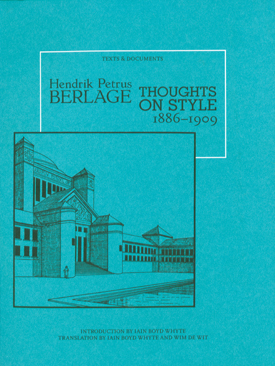Constant. New Babylon (2015) [EN, ES]
Filed under catalogue | Tags: · architecture, art, art history, city, situationists, urbanism, utopia

“Constant. New Babylon brings together a selection of works that Constant held in the framework of this project, whose realization and materialization has turned into a wide range of expressive means (architectural models, drawings, watercolors, prints, collages, modified maps, films, slides…), as well as an intense theoretical activity in the form of texts and lectures, with three representative examples in this catalog. There are also texts by Laura Stamps, Pedro G. Romero, Mark Wigley and a conversation between Rem Koolhaas and Pascal Gielen, among others.”
Catalogue of an exhibition held at the Museo Nacional Centro de Arte Reina Sofía, Madrid, 20 Oct 2015-29 Feb 2016.
Publisher Museo Nacional Centro de Arte Reina Sofía, Madrid, 2015
ISBN 9788480265232, 848026523X
310 pages
Alfred H. Barr, Jr.: Cubism and Abstract Art: Painting, Sculpture, Constructions, Photography, Architecture, Industrial Art, Theatre, Films, Posters, Typography (1936)
Filed under book, catalogue | Tags: · abstract art, abstraction, architecture, art, art history, avant-garde, constructivism, cubism, dada, design, expressionism, fauvism, film, futurism, impressionism, painting, photography, sculpture, suprematism, surrealism, theatre, typography

The catalogue of the first MoMA’s retrospective of modernism, held 2 March-19 April 1936, laid the theoretical foundation of the museum. Its jacket contains a notorious chart of modernist art history, the Diagram of Stylistic Evolution from 1890 until 1935.
“The catalogue remains an important historical document (as does that for Fantastic Art, Dada, Surrealism). It set abstraction within a formalist framework that—ignoring the intellectual byways of French symbolism, German idealism, and Russian Marxism of the previous thirty years—was shaped by the scientific climate that had started a century before. … The exhibition together with the widespread dissemination of its influential catalogue, established Cubism as the central issue of early modernism, abstraction as the goal.” (Sybil Gordon Kantor, 2003)
The exhibition later traveled to another 7 cities: San Francisco, Cincinnati, Minneapolis, Cleveland, Baltimore, Providence, and Grand Rapids.
Publisher Museum of Modern Art, New York, 1936
249 pages
via MoMA
Commentary: Meyer Schapiro (Marxist Quarterly, 1937), Susan Noyes Platt (Art Journal, 1988), Astrit Schmidt Burkhardt (Word & Image, 2000).
Publisher (incl. master checklist and press releases)
WorldCat
PDF (47 MB)
Comment (1)Hendrik Petrus Berlage: Thoughts on Style, 1886–1909 (1996)
Filed under book | Tags: · aesthetics, architecture, art history, modernism, style, theory

“Looking back to the period around 1910, Mies van der Rohe once commented that there was but a single architect then working on the European architectural scene, “Berlage was a lone giant.”
In parallel activities as both an architect and an architectural philosopher, H. P. Berlage created a series of buildings that witnessed the gestation and birth of architectural Modernism and a body of writings that probed in depth the problems and possibilities of this new style. But whereas his Stock Exchange in Amsterdam, with its rational mastery of materials and space, has long been celebrated for its seminal influence on the architecture of the new century, Berlage’s passionate writings on architecture, which exerted an equal influence on his contemporaries, have often been neglected.
In his wide-ranging critical introduction, Iain Boyd Whyte convincingly demonstrates that one corpus of work cannot be understood without taking into account the other: Berlage’s writings inform his architecture to the same extent that his buildings reflect his probing aesthetic deliberations. Berlage’s principal texts are here brought together in English translation for the first time. Collectively, they present to the English-language reader a new and vital chapter in the history of European modernism.”
Introduction by Iain Boyd Whyte
Translated by Iain Boyd Whyte and Wim de Wit
Publisher Getty Center for the History of Art and the Humanities, Santa Monica/CA, 1996
Texts & Documents series
ISBN 0892363339, 9780892363339
331 pages
Review: Suzanne Frank (J Arch Education 1997).
Comment (0)
